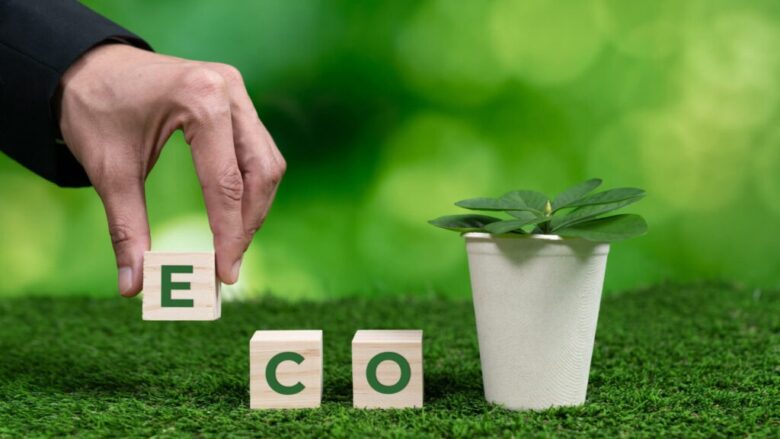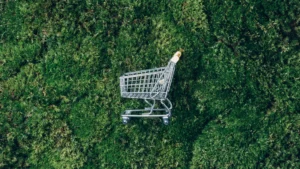Make your home more eco-friendly by adopting small changes that add up. Start by cutting back on waste: using cloth towels instead of paper ones, storing food in Tupperware rather than bins, taking a reusable grocery bag to the market, etc. Install a smart thermostat or use a programmable water heater. Don’t forget recycling!
1. Recycle
Most people understand the value of recycling paper, plastic, and aluminum waste; however, many don’t realize they can also recycle food scraps—an approach that reduces agriculture and landfill waste as well as greenhouse gas emissions.
Other strategies to reduce household waste include shopping with reusable cloth bags, purchasing local produce, and forgoing shipping packaging. You can also reduce home energy costs by unplugging appliances that you aren’t using and switching on natural light instead, adjusting air conditioner settings to minimize energy use, fixing leaky faucets, or making eco-friendly cleaning products yourself to prevent toxic chemical exposure.
2. Reuse
For mankind to address the triple global crises of climate change, biodiversity loss, pollution, and wastefulness effectively, people must make sustainable lifestyle changes that begin at home—starting with small but effective steps.
Reduce packaging by shopping in stores that minimize it or ordering online without boxes and tape. Opt for products made with recycled materials and avoid those that come with more packaging than necessary. Start a kitchen compost to transform food scraps into nutrient-rich fertilizer for your garden, sew reusable fabric bags for grocery shopping, and switch out disposable paper products with cloth napkins and rags instead.
3. Repurpose
Reusing materials and products extends their lifespan and reduces greenhouse gas emissions associated with disposal. Use cloth towels and reusable napkins instead of disposable paper versions, or carry a handkerchief when suffering a sniffle instead of tissues.
Consider home decor pieces made of eco-friendly materials like jute, Sabai grass, and bamboo for home decorations that add an eco-friendly aesthetic and reduce waste. Repurposing or recycling materials when renovating can also help minimize waste production.
4. Go Green
Many who choose a green lifestyle aim to reduce their environmental impact and protect vital ecosystems and wildlife. Some protocols involve avoiding products made by companies associated with deforestation, as well as supporting renewable energy initiatives.
Other eco-friendly practices include using reusable shopping bags, cooking with natural ingredients, and using less water when washing clothes. People who go green typically support sustainable agriculture by eating organic food that’s free from harmful chemicals and pesticides; carpooling to work or taking public transit or riding a bicycle to reduce pollution also form part of this effort.
5. Plant a Tree
Planting trees helps mitigate greenhouse gas levels in the atmosphere by converting carbon dioxide to oxygen, thus reducing greenhouse gases such as greenhouse gases. People and wildlife worldwide can benefit from planting trees—they provide shade, cool air circulation, and enhanced natural beauty while connecting us back to nature. These plants also protect against soil erosion by slowing runoff water and naturally filtering rainwater through the filters in their roots.
Small trees can make a huge environmental difference. Trees reduce smog levels, regulate temperatures, provide shelter and food to animals, and lower noise pollution. Recently planted trees should be watered at least once every week during dry weather until their roots have taken hold and become established.
6. Plant a Vegetable Garden
Raising vegetables yourself is an effective way to reduce food waste while simultaneously cutting back on the amount of CO₂ and methane produced from landfills, while providing you with a rewarding and fun experience!
Vegetable gardening requires some work and care but doesn’t have to be complex. The key is choosing an ideal location; leafy veggies and herbs thrive best in areas that receive at least six hours of direct sun every day. Find an open, sunny site away from trees and shrubs, which compete for sunlight and water resources with your vegetable garden, and then lay down an organic mulch layer to reduce watering needs and control weeds.
7. Plant a Flower Garden
Cultivating a flower garden can be one of the most satisfying tasks you can do to improve yourself and the environment. Not only are flowers gorgeous to look at in your yard, they also attract pollinators.
Before planting, clear away all grass and weeds from the area where you intend to establish your flower garden. Next, evaluate how much sunlight the area receives daily—most flowering plants do best when exposed to full sunlight. Planning your flower garden requires selecting plants with blooming times spanning across spring, summer, and fall for added visual interest. Incorporating hardscape elements like arbors or trellises gives the garden structure.
8. Plant a Tree in Your Garden
Trees can enhance both the value and quality of life for any homeowner by purifying the air, reducing water waste, buffering noise pollution, and more. Just make sure that when planting a tree, it has room to reach maturity without interfering with power lines, sidewalks, or any other structures as it matures.
From reusing towels and grocery bags to using organic and eco-conscious textiles, every green home improvement you make contributes to a greater effort toward environmental sustainability. Even small changes can make an impactful statement about our commitment to sustainability—so start making these simple yet straightforward home improvements now and create a more eco-friendly home!
9. Plant a Fruit Tree
Once the ground thaws in spring, plant bare-root trees as soon as the ground thaws out. However, avoid fertilizing post-planting, as overfeeding promotes poor root development and stress to trees that leads to decreased fruit production. Your success as a fruit or nut gardener depends on a combination of factors—location, climate, and soil type—as well as choosing suitable rootstock and cultivar plants, including those purchased online from glossy catalogs that promise big. Unfortunately, the plants purchased online may not adapt well to local conditions.
Properly pruned trees open their canopies to allow light penetration for optimal flower bud development and fruit production, as well as to minimize undesirable vigorous shoots that might arise during summer pruning. Scout regularly for insect and disease issues that require prompt resolution before trimming again in winter.




